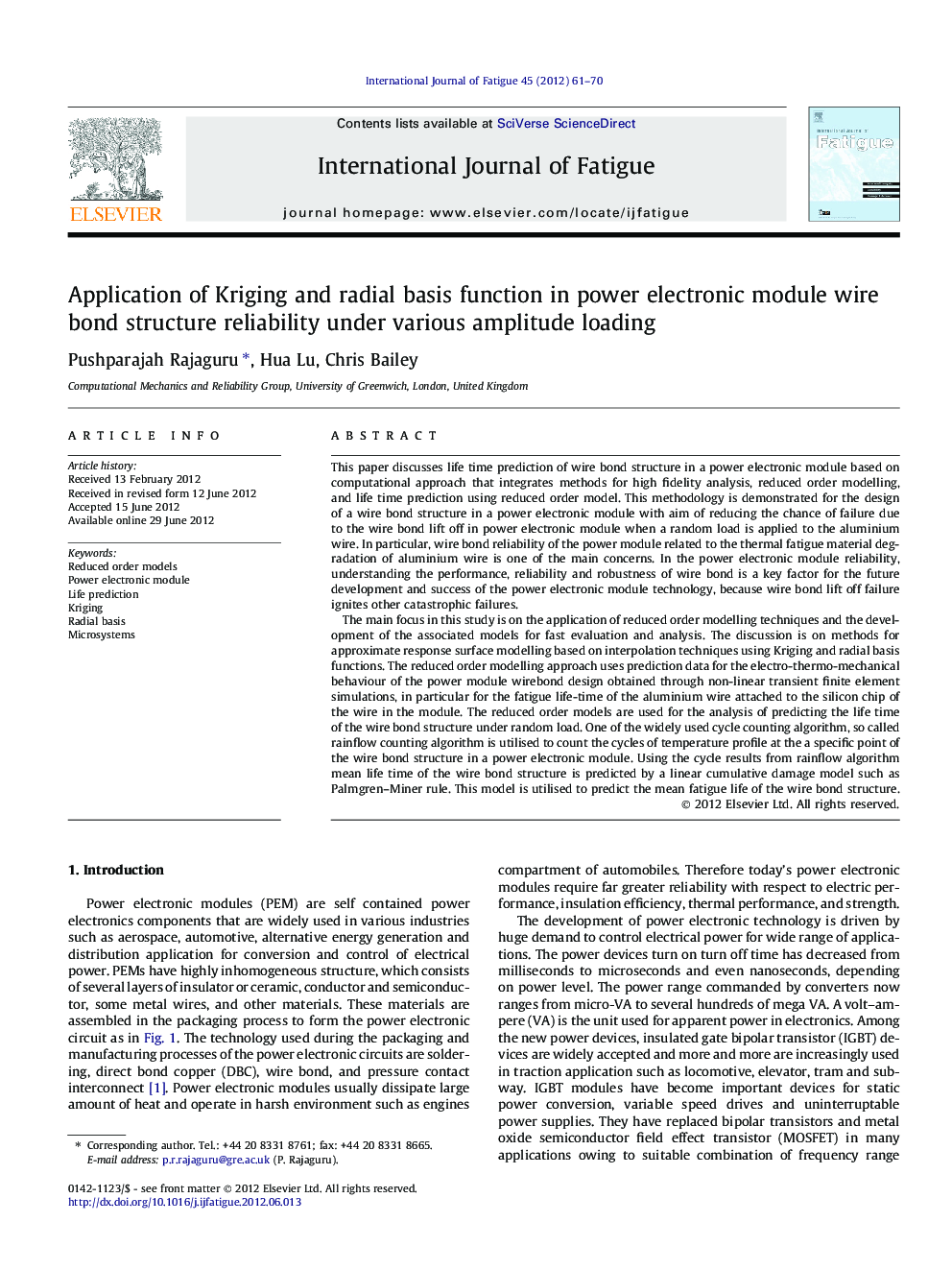| Article ID | Journal | Published Year | Pages | File Type |
|---|---|---|---|---|
| 777731 | International Journal of Fatigue | 2012 | 10 Pages |
This paper discusses life time prediction of wire bond structure in a power electronic module based on computational approach that integrates methods for high fidelity analysis, reduced order modelling, and life time prediction using reduced order model. This methodology is demonstrated for the design of a wire bond structure in a power electronic module with aim of reducing the chance of failure due to the wire bond lift off in power electronic module when a random load is applied to the aluminium wire. In particular, wire bond reliability of the power module related to the thermal fatigue material degradation of aluminium wire is one of the main concerns. In the power electronic module reliability, understanding the performance, reliability and robustness of wire bond is a key factor for the future development and success of the power electronic module technology, because wire bond lift off failure ignites other catastrophic failures.The main focus in this study is on the application of reduced order modelling techniques and the development of the associated models for fast evaluation and analysis. The discussion is on methods for approximate response surface modelling based on interpolation techniques using Kriging and radial basis functions. The reduced order modelling approach uses prediction data for the electro-thermo-mechanical behaviour of the power module wirebond design obtained through non-linear transient finite element simulations, in particular for the fatigue life-time of the aluminium wire attached to the silicon chip of the wire in the module. The reduced order models are used for the analysis of predicting the life time of the wire bond structure under random load. One of the widely used cycle counting algorithm, so called rainflow counting algorithm is utilised to count the cycles of temperature profile at the a specific point of the wire bond structure in a power electronic module. Using the cycle results from rainflow algorithm mean life time of the wire bond structure is predicted by a linear cumulative damage model such as Palmgren–Miner rule. This model is utilised to predict the mean fatigue life of the wire bond structure.
► Wire bond structure of a power electronic module based on computational approach is utilised. ► FEA of wirebond structure under variable amplitude load current is simulated. ► Rainflow cycle counting is utilised to count the cycles of resulting temperature profile. ► Using the cycle count and the reduced order models, life consumed percentage is predicted. ► Results by various fatigue models such as nonlinear and linear models are predicted and compared.
